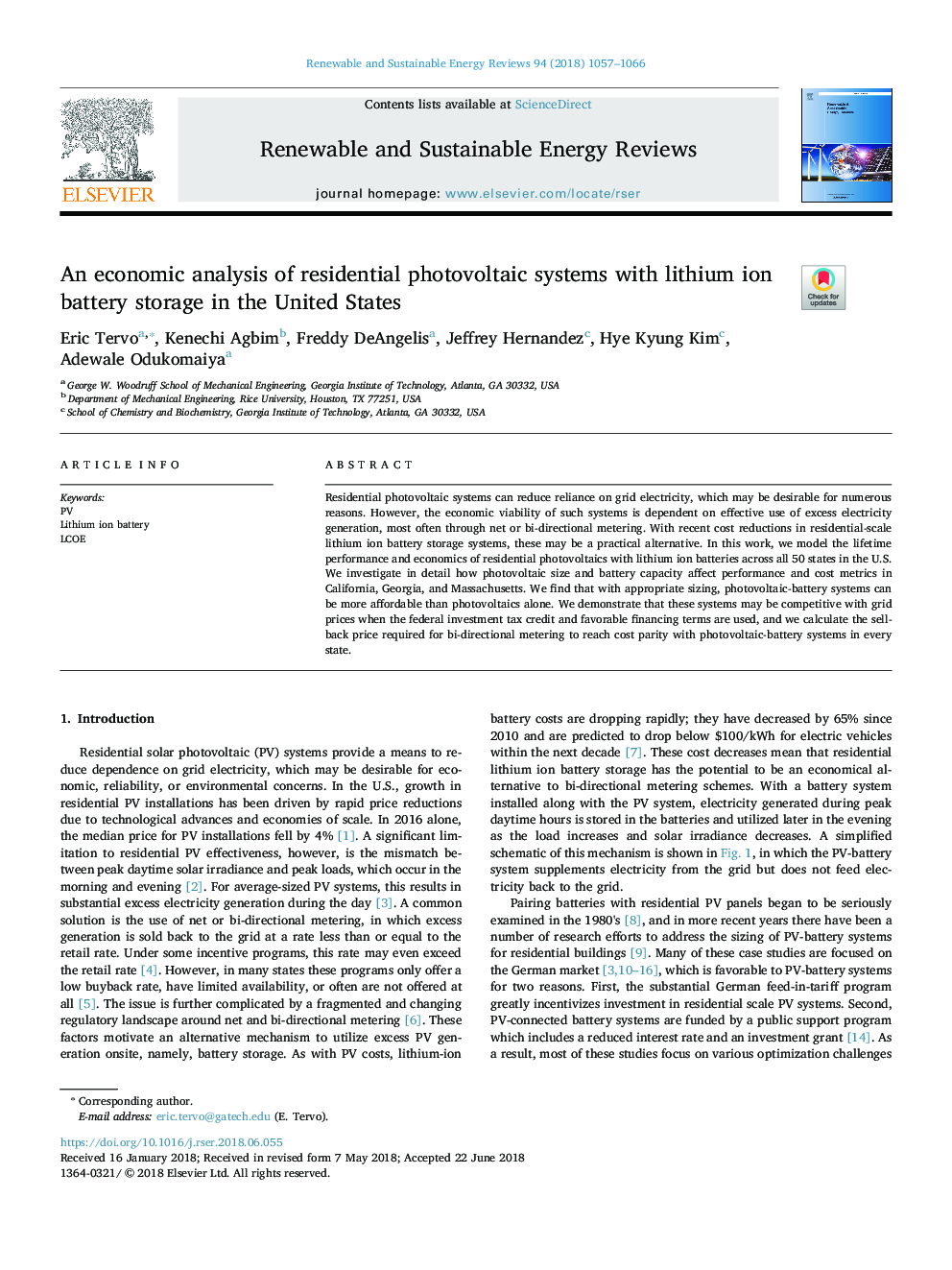| Article ID | Journal | Published Year | Pages | File Type |
|---|---|---|---|---|
| 8110606 | Renewable and Sustainable Energy Reviews | 2018 | 10 Pages |
Abstract
Residential photovoltaic systems can reduce reliance on grid electricity, which may be desirable for numerous reasons. However, the economic viability of such systems is dependent on effective use of excess electricity generation, most often through net or bi-directional metering. With recent cost reductions in residential-scale lithium ion battery storage systems, these may be a practical alternative. In this work, we model the lifetime performance and economics of residential photovoltaics with lithium ion batteries across all 50 states in the U.S. We investigate in detail how photovoltaic size and battery capacity affect performance and cost metrics in California, Georgia, and Massachusetts. We find that with appropriate sizing, photovoltaic-battery systems can be more affordable than photovoltaics alone. We demonstrate that these systems may be competitive with grid prices when the federal investment tax credit and favorable financing terms are used, and we calculate the sell-back price required for bi-directional metering to reach cost parity with photovoltaic-battery systems in every state.
Keywords
Related Topics
Physical Sciences and Engineering
Energy
Renewable Energy, Sustainability and the Environment
Authors
Eric Tervo, Kenechi Agbim, Freddy DeAngelis, Jeffrey Hernandez, Hye Kyung Kim, Adewale Odukomaiya,
